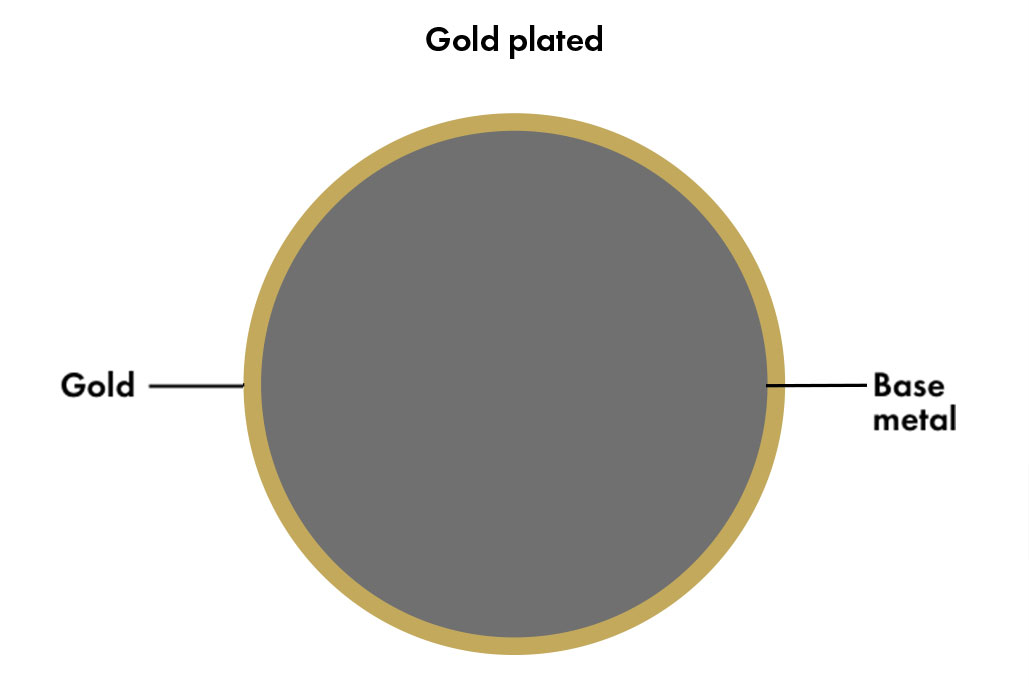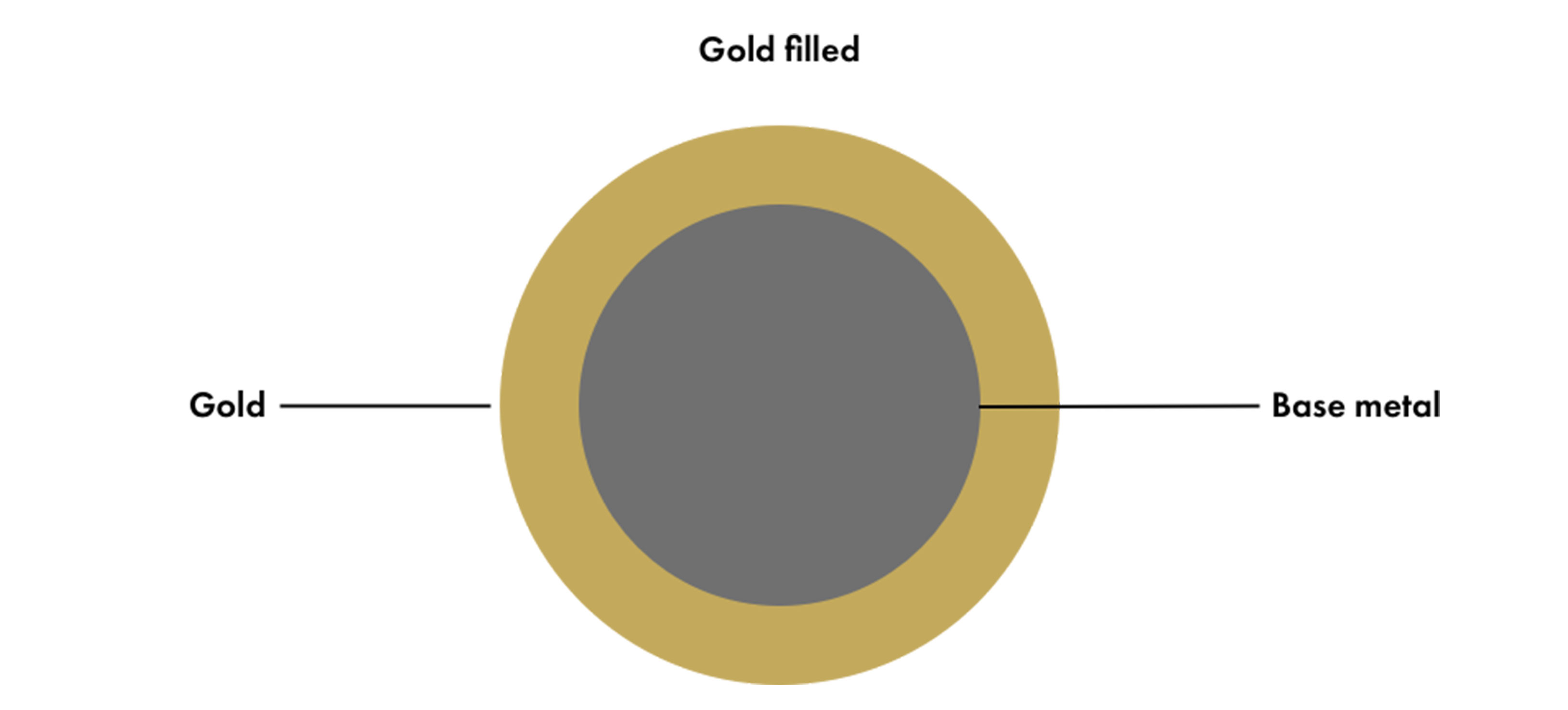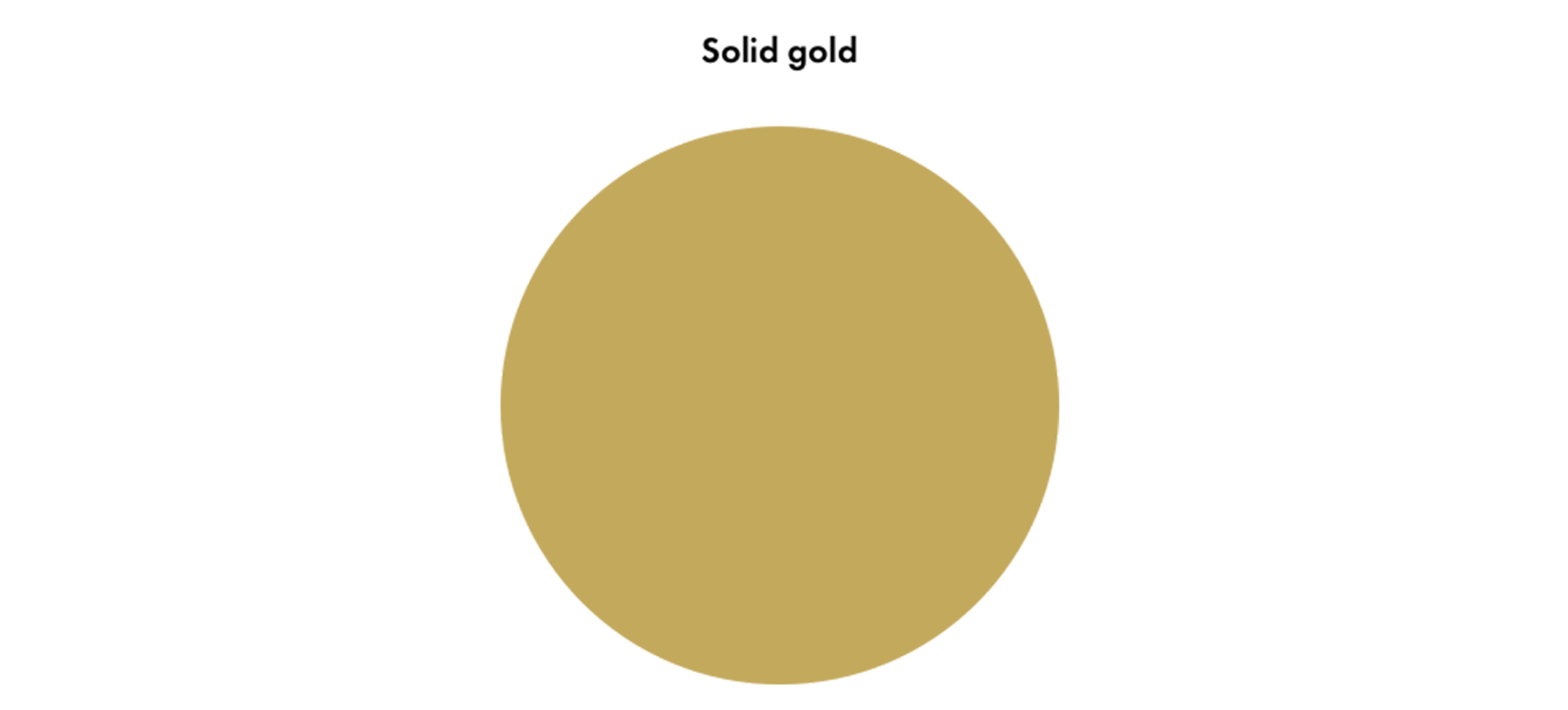Origen impecable


The Break Down: Plated, Filled, Vermeil and Solid Gold
Angelica Frey | July 15, 2023
Plated, filled, or solid–it’s all too easy to get swept up in the confusion surrounding jewelry materials, gold in particular. Our designs are made with recycled solid gold, which, unlike plated, filled or vermeil, is built to last and won’t rub off or change color over time. One of our core values as a company is quality—we want to make sure that there is longevity in your VRAI pieces so you can enjoy them for years to come. Since we’re serious about our materials, we felt it was time to explain the difference between plated, filled vermeil, and solid gold.


Gold Plated
When something is gold plated, its gold content is usually less than 1%. This means that the piece is a base metal (often brass or silver) that takes a quick dip in a gold bath–hence the plating. While plated pieces may possess the same luster and gold appearance at first, this layer is often quick to fade when washed, rinsed, or rubbed too hard, leaving behind discolored skin and dirty looking jewelry. Most fashion jewelry is gold-plated, which allows the cost to be as low as possible.


Gold Filled
Similar to gold plating, gold filled jewelry is also made of a different base metal. The difference here lies in the process. In filled jewelry, the gold is melted onto the base metal through a mechanical process. By law, gold filled jewelry must contain 5% gold by weight to be categorized as such, which means the gold coating is generally much thicker than that of plated jewelry. Because of this, the inside of a gold filled jewelry piece will still be stamped with a karat number, however, this is only for the filled coating. While filled jewelry will maintain its gold cast for longer, it will inevitably undergo discoloration and tarnishing after time.


Gold Vermeil
Gold Vermeil is a common type of gold plating, which uses sterling silver as the base metal. Vermeil is more hypoallergenic and has a thicker layer of gold than normal gold plating, which is why you'll see it in stores selling fine jewelry. However, with enough scuffs and scratches the plating can wear off.


Solid Gold
In its most pure form (24k) gold is soft, almost orange in color, scratches easily, and is altogether too weak to work with. Because of this, alloys are added to create a more structurally sound metal that mixed together, is known as “solid gold.” All of our jewelry pieces are made using 14k solid gold, which means that they are 14 parts pure gold and 10 parts other alloys. As for our engagement and wedding collection, we use 18k yellow or white gold, which is 18 parts gold, 6 parts alloys. Our use of recycled solid gold ensures that pieces won’t tarnish or fade over time, even with washing and everyday wear.
Our materials matter; they’re a significant reason why we do what we do - which is why we think it’s important to educate around them. If you have any more questions regarding the materials that we use and how we use them, please feel free to email us at hello@vrai.com.